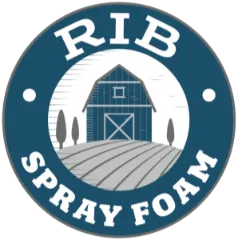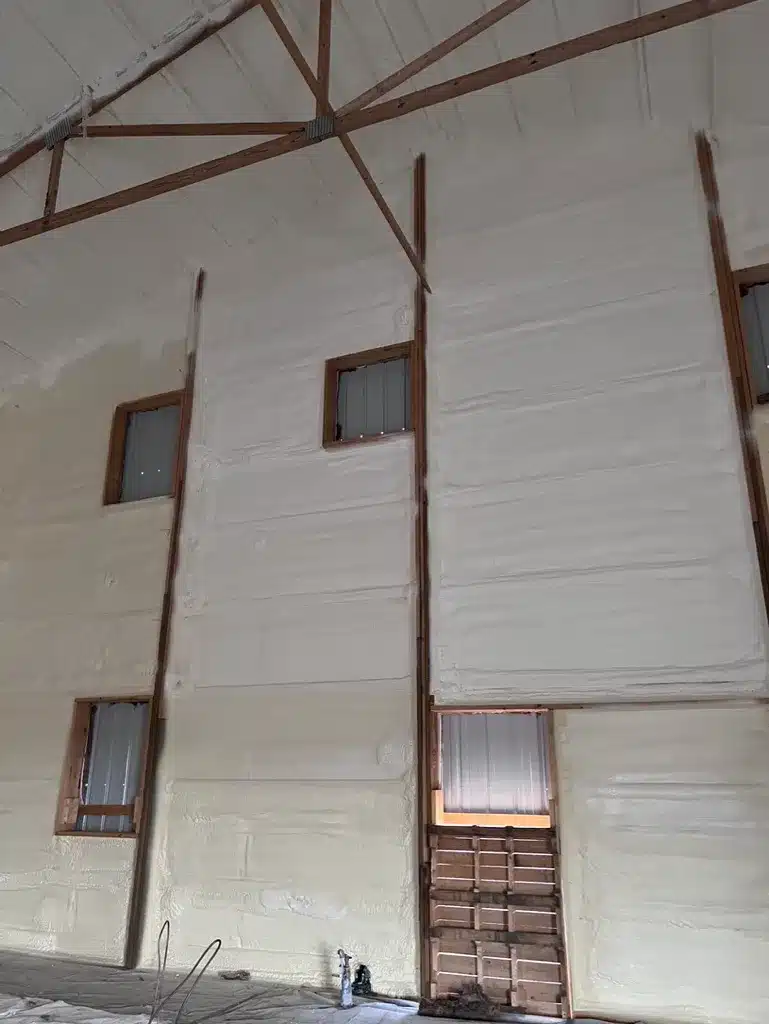Spray foam insulation delivers higher thermal resistance and air sealing performance than traditional materials like fiberglass or cellulose. For buildings in Colorado’s variable climate, spray foam reduces energy loss, limits moisture buildup, and strengthens structural integrity. Traditional insulation offers upfront simplicity but lacks in long-term efficiency.
This article compares both options across durability, energy savings, air control, and installation challenges. Rib Spray Foam Company applies direct field experience from residential and agricultural structures to present practical insights.
Performance and Efficiency Comparison
| Feature | Spray Foam Insulation | Traditional Insulation (Fiberglass/Cellulose) |
|---|---|---|
| R-Value per Inch | 6.0-7.0 (Closed Cell) | 2.2-3.8 (varies by material) |
| Air Sealing Capability | High – seals cracks and gaps | Low – requires vapor barriers |
| Moisture Resistance | Excellent (Closed Cell) | Moderate to poor |
| Mold Resistance | Inhibits mold growth | Susceptible without proper moisture control |
| Structural Reinforcement | Adds wall strength (Closed Cell) | No structural support |
| Installation Requirements | Requires professional application | Easier to install but less precise |
| Lifespan | 20+ years with minimal degradation | 10-25 years with potential settling |
| Energy Efficiency Impact | High – reduces HVAC load | Moderate – thermal gaps may remain |
Technical Specifications Breakdown
| Specification | Closed Cell Spray Foam | Fiberglass Batts | Cellulose Blown-In |
|---|---|---|---|
| R-Value per Inch | 6.5–7.0 | 2.9–3.8 | 3.2–3.8 |
| Vapor Barrier Properties | Built-in | Requires separate barrier | Depends on density and install |
| Air Infiltration Rating | Very Low | Moderate to High | Moderate |
| Fire Rating (with additives) | Class 1 or 2 | Class 1 | Class 1 or 2 |
| Typical Application Areas | Walls, ceilings, crawlspaces | Attics, walls | Attics, wall cavities |
Source: U.S. Department of Energy, Building America Solution Center
Practical Insights From On-Site Experience
Closed-cell spray foam works exceptionally well in rural barns, crawl spaces, and homes exposed to strong wind loads or wide temperature ranges. In northern Colorado, Rib Spray Foam Company often sees traditional batts degrade in performance during winter due to air leaks and moisture condensation.
Bonus Tip
Applying closed cell foam in crawl spaces not only insulates but also prevents radon and moisture migration especially valuable in older homes without proper foundation sealing.

Things to Consider Before Choosing an Insulation Type
- Climate demands: Areas with wide seasonal shifts benefit more from air-sealing insulation like spray foam.
- Building age and design: Older homes or irregular framing may require the flexibility and expansion capacity of foam.
- Moisture exposure: Environments with high humidity or poor drainage need better vapor resistance than traditional options offer.
- Project access: Retrofitting hard-to-reach spaces is easier with blown or sprayed materials compared to rigid batts.
- Allergy sensitivity: Spray foam limits dust and airborne particles, while fiberglass may release fibers during installation and over time.
Bonus Tip
In barns and pole structures, foam can create a semi-conditioned envelope that protects stored equipment from freeze cycles without active heating.
Services Available Through Rib Spray Foam Company
- Closed Cell Spray Foam: Seals surfaces with dense, moisture-resistant insulation ideal for crawl spaces, barns, and new builds.
- Residential Spray Foam: Applied in homes to reduce air leakage, increase comfort, and improve long-term HVAC efficiency.
- Crawl Space Spray Foam: Insulates and seals lower foundation zones to reduce energy loss and prevent damp conditions.
- Pole Barn Spray Foam: Strengthens and seals large agricultural or utility structures exposed to outdoor weather.
What People Often Ask Before Making a Choice
How long does spray foam insulation last?
Closed cell spray foam holds its R-value and structure for over two decades without sagging or settling.
Is traditional insulation ever a better fit?
For simple attic retrofits or budget-limited builds where moisture isn’t an issue, traditional batts may be serviceable.
Can insulation impact indoor air quality?
Spray foam creates an airtight seal that limits allergens and external pollutants. Traditional materials may require air sealing to achieve similar control.
Can insulation improve structural performance?
Closed cell spray foam adds rigidity to walls and roofing, especially useful in high-wind or seismic zones. Traditional insulation does not offer this benefit.
Summary Takeaways
Spray foam insulation offers higher thermal value, durability, and air sealing, especially in buildings exposed to variable weather or moisture. Traditional insulation suits simpler applications but lacks long-term performance. Selection should depend on building use, exposure, and desired lifespan.
Contact Rib Spray Foam Company for Guidance
For buildings requiring long-lasting insulation that handles moisture, drafts, and seasonal shifts, contact Rib Spray Foam Company. Reach out via [email protected] or call (970) 518-2883 to discuss your project needs or book an assessment.
Questions That Come Up After Installation
How do you maintain spray foam insulation?
No maintenance is typically needed. Inspections every few years can confirm continued performance.
Can spray foam be used with other insulation types?
Yes. Hybrid systems often combine batts with spray foam to meet performance and budget goals.
What if future renovations require wall access?
Spray foam is more difficult to remove than batts. Planning access points during installation helps avoid issues.
Is there off-gassing after installation?
Any chemical odor dissipates within 24-72 hours after proper ventilation. Material cures quickly under standard conditions.
What problems occur if spray foam is installed incorrectly?
Inconsistent application can lead to gaps or over-expansion. Hiring certified technicians prevents these issues.



